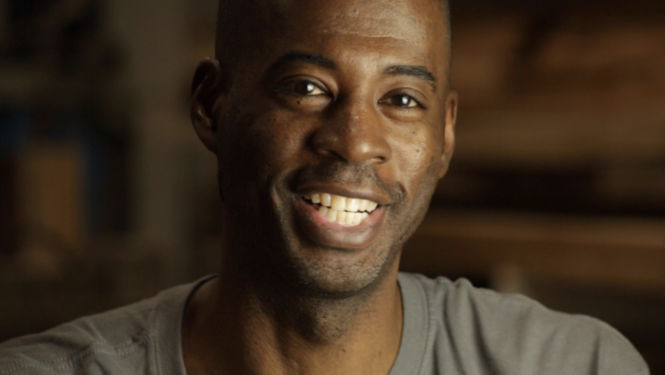I received my first text communication from Antwane Lee in early March 2020. The seriousness of the coronavirus was still up in the air and at that point Burning Man 2020 was still on. I would soon learn this never-been-to-Black-Rock-City, Chicagoan architect was persistent, intelligent, sure of what he wanted, and a big thinker. He was inspired by the work I had been doing via Black Burner Project and was sure he wanted to find a way to collaborate.
Until we figured out what that might look like, we stayed in touch, checked in on each other and planned for Burning Man 2020. Before the world turned upside down, Antwane had every intention set on taking his first art piece to BRC as a first-year Burner. He was awarded a Black Rock City Honorarium in 2020 for his conceptual design plans for an Afrofuturism art piece.
Since our first conversation, Antwane has made a significant impact and accomplishments both in Chicago and in this journey to bring “The Solar Shrine” to fruition.
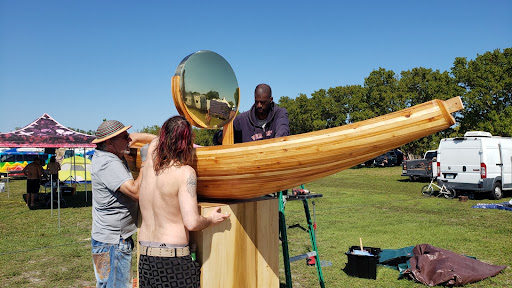
It is amazing to meet people who are willing to take on such huge projects without having been to Black Rock City before. Yet, that is exactly what Burning Man is about. The journey is an experience, the unknown, and a process of figuring it all out with the support of a community you don’t even know.
As we all set our eyes on the dust, most of us have started to prepare and organize the many details involved in returning to Black Rock City. Some people like Antwane are on double project duty. He’s preparing for Burning Man for the first time, which is a full project of its own, on top of bringing a large-scale art installation to the playa, which can be a logistical and emotional whirlwind.
I am excited to experience “The Solar Shrine” and embark on what I feel will be an epic art journey for BIPOC artists such as Antwane and his team. Let’s get an inside look into what it’s been like for Antwane Lee thus far.

Tell us about yourself, Antwane.
Antwane: I am a licensed architect and artist from Chicago. I grew up in the inner city, and it and my family really had a big impact on me. My father was a union carpenter and I went to construction sites with him from a very early age. This is where I first got exposed to buildings, especially in Black and Brown communities in the city, and [it] definitely influenced me to choose a career in architecture.
What was the inspiration for wanting to go to Burning Man? And on top of that, why take an art piece?
I started going to regional burns several years ago and really enjoyed the culture. I made friends in the community and we started working on group art projects. Being an architect, I suggested that we build an art piece on a larger scale at Burning Man. Prior to this, the largest installations they had done were CORE projects at the big event. My friends gave me support and that got the ball rolling. I am passionate about African and African diasporic cultures, having studied them for many years. So this guided my Afrofuturistic design for “The Solar Shrine,” which is based on Ancient Egyptian and Nubian cosmologies.
What has it been like building your first art piece, with all the factors that go into a project like this?
It’s been fun and a lot of hard work. My team, The Collective, and I have put in a lot of time on the project. They are really dedicated and are ‘willing’ “The Solar Shrine” into existence. Having a volunteer team posed some challenges with scheduling, but we build regularly and this gives everyone a chance to contribute. It’s also very enjoyable because the members on the team are at all levels, which gives people opportunities to learn new skills and use tools that they have never used before.
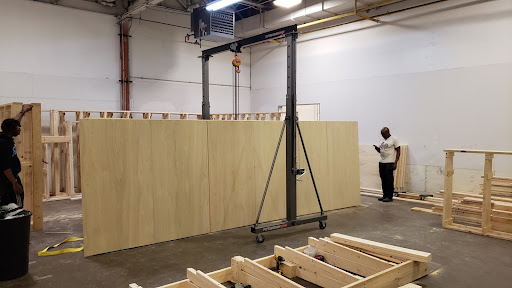
What has been the biggest challenge during this journey thus far?
One of my biggest challenges was finding the space to build the installation. We initially had an almost vacant workspace where we were going to build “The Solar Shrine.” During the pandemic it was renovated and became fully occupied. I started looking again in the summer of 2021. Since it was a community-based project and going to Burning Man, we thought that we would be looked at favorably by landlords to get a good deal on rent. However, owners did not want to cut us a break. I even had people hang up the phone on me. But I persevered and finally found a good workshop space for the build.
What does this art piece mean to you? Why is it important?
The piece means a lot to me, being a person of African descent. In addition to understanding the history of the continent, I am really inspired by the genre of Afrofuturism, which is a cultural and artistic aesthetic that explores the intersections between arts, history, mythology, science fiction, and politics from a Black cultural lens. It references elements from the past but places them in our contemporary time and operates as a vehicle for envisioning the future. Growing up in the inner city, I witnessed many trauma-based incidents of violence. In addition to the magical and mystical elements of the project, I see “The Solar Shrine” as an Afrofuturistc architectural prototype for meditation and ancestral healing, thereby creating a better future in the community.
Where did the inspiration for “The Solar Shrine” come from?
Since I was a kid, I have loved Ancient Egypt and Nubia, and studied the cosmologies of this area of ancient Africa. The project is dedicated to the Egyptian and Nubian Sun god Ra, and will be aligned with the rising sun in the east at Burning Man. The main/larger structure, “The Shrine,” is consecrated to our collective ancestors who are reborn everyday through the cycles of the Sun. It is a contemporary design of an ancient mastaba where the dead were buried and resurrected, and will be a place of spiritual transformation.

Do you think the art piece will have a bigger impact now than if it had made it out there in 2020?
I think that the project will have an impact at Burning Man as it has matured and gestated for over two years. However, it has already had an impact in Chicago. We are working with inner-city youth and a local non-profit that facilitates rehabilitation for community residents, whether it be support for those with mental health issues or giving assistance or training to people who were formerly incarcerated. This is very important to me because of the socio-economic environment in which I grew up. So by my standards, the project has set out to do what was established at the community level and has had an impact.
What do you hope people experience from “The Solar Shrine?”
I want people to experience “The Solar Shrine” as a portal to inner aspects of our collective psyche. I want people to be re-awakened by the transformative power of ancestral memory and spirituality as shaped in the physical world by architecture.
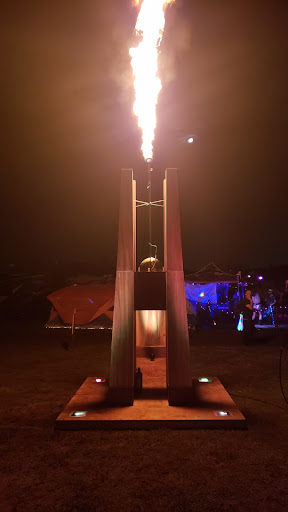
As a person of color and a Black man, can you share what you think Burning Man has to offer the world? Why does this creative community matter to you, and why are you investing your time and energy into it?
I think that one of the biggest things that Burning Man offers the world is the concept/principle of Radical Self-expression. The community is a place where anyone can be themselves and be open to new possibilities, and I have been welcomed with open arms. I took two of my good friends from Chicago to Love Burn in Miami last February. Both indicated that this was the type of community they are looking to connect with. I have invested much of my time and energy into the Burner culture because I can share my values and experiences as an African-American and have the freedom to present a type of art and architecture that I think will have an impact and be a catalyst for social change.
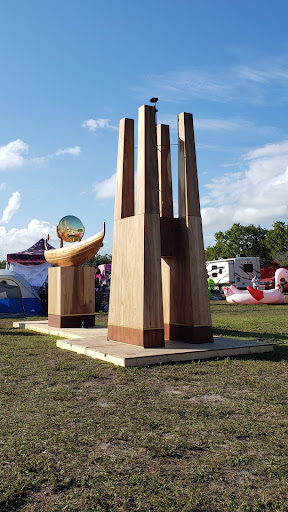
“The Solar Shrine” team needs the community’s support to finance their art build and journey to Black Rock City. You can donate to “The Solar Shrine” via their crowdfunding campaign.
Cover image of Antwane Lee (Photo by Ben Gonzales)
All other photos courtesy of Antwane Lee

